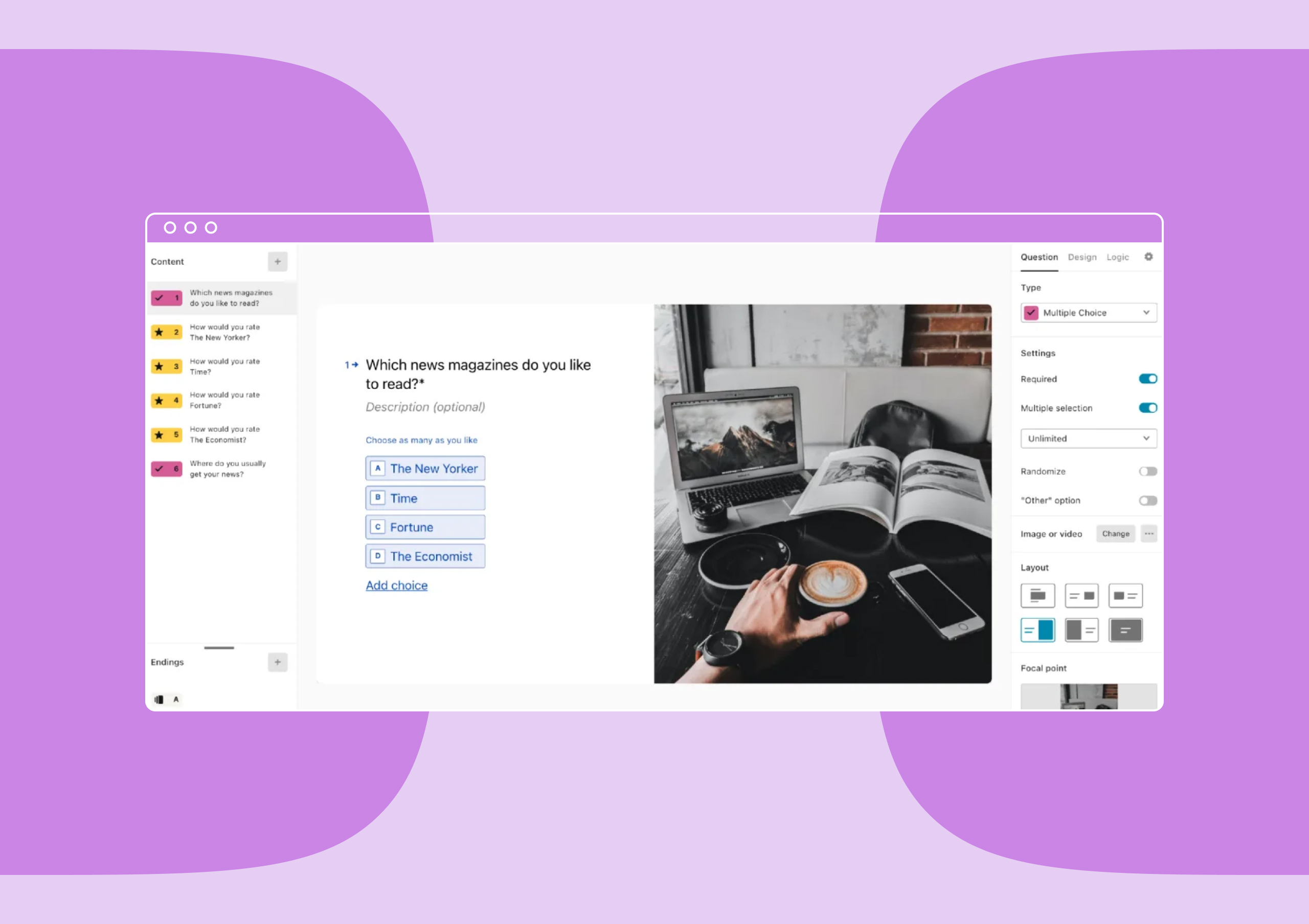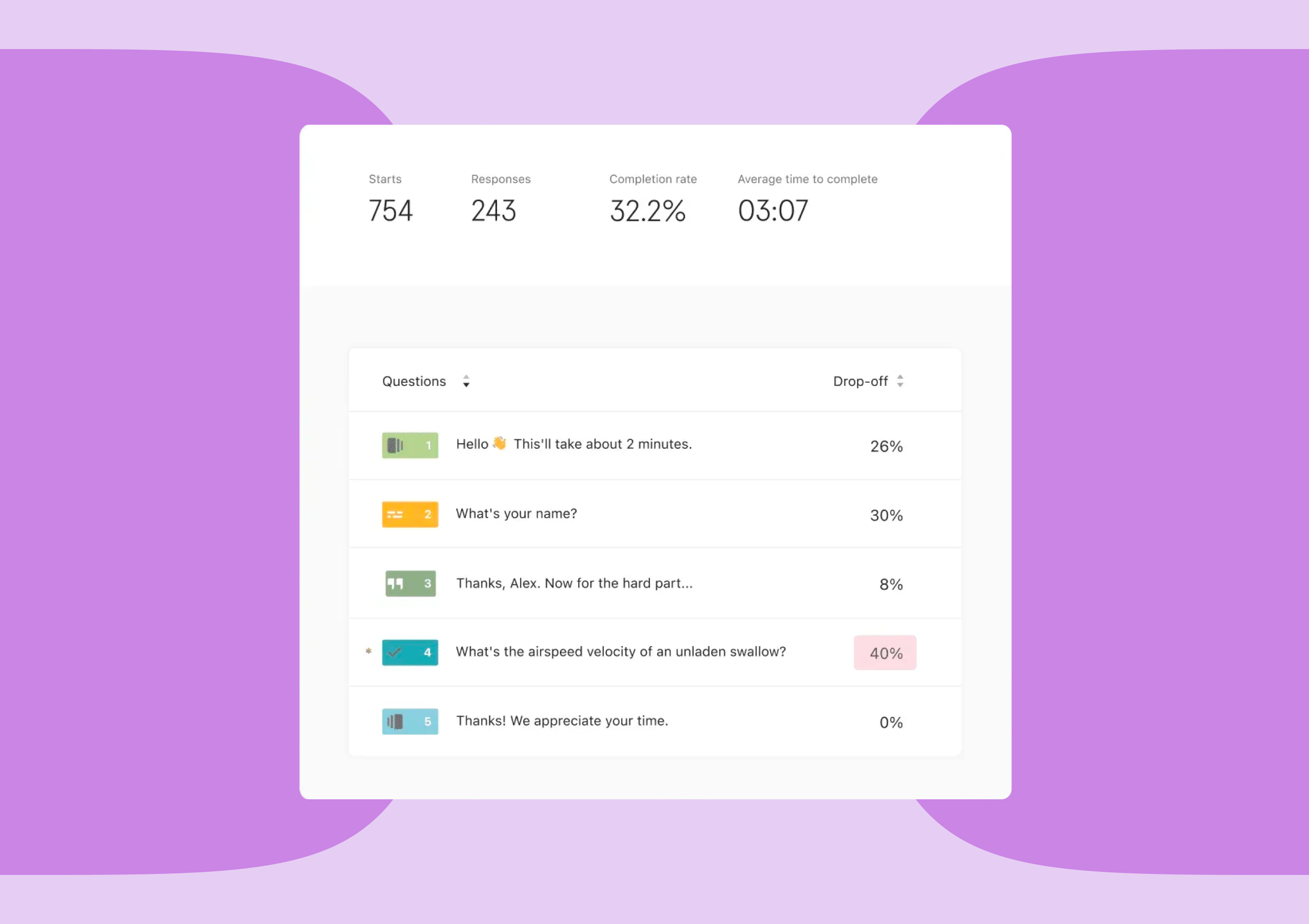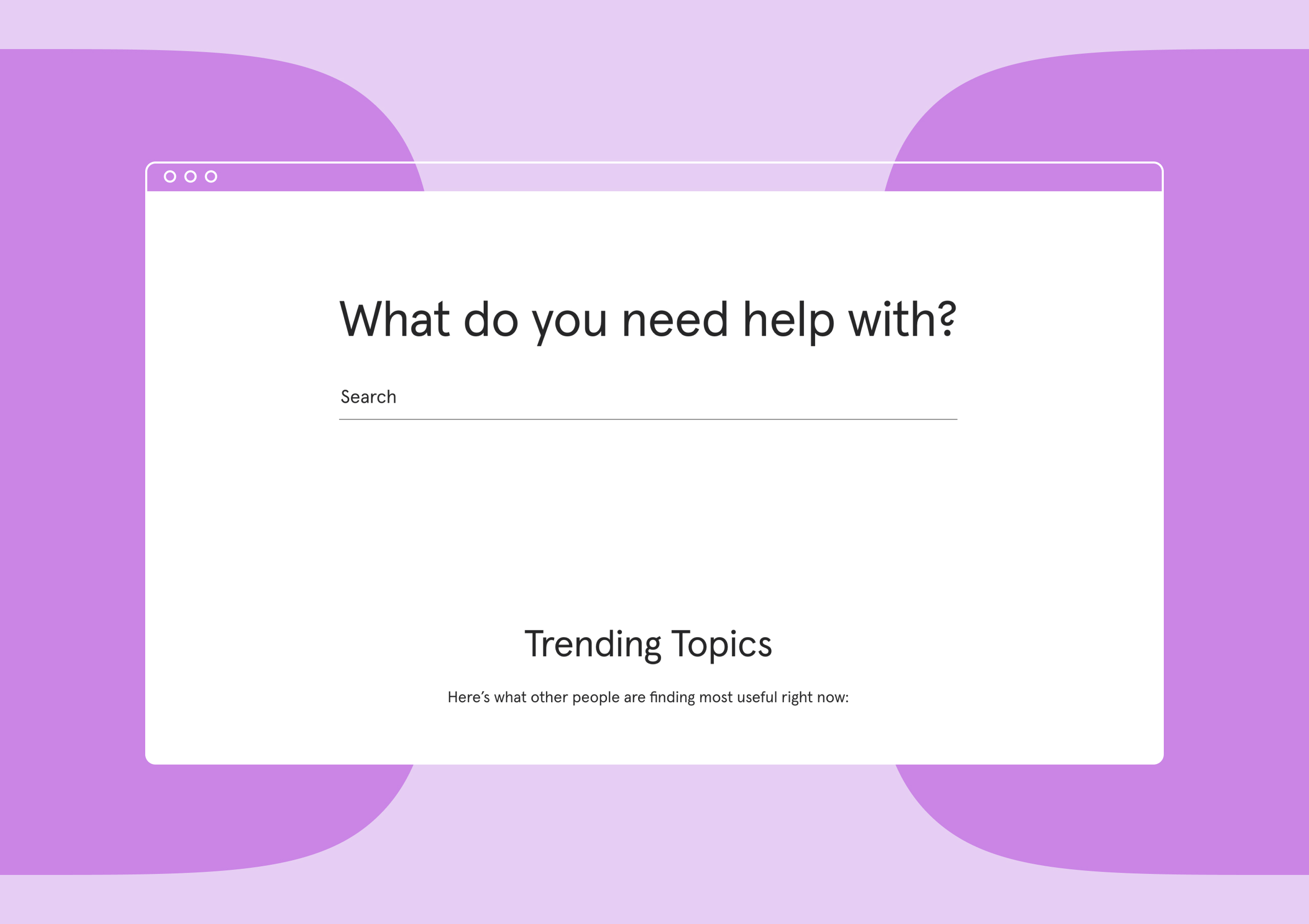Product
Typeform vs. SurveyMonkey: Which Is Better? [2024]
Typeform and SurveyMonkey are tools that help you build surveys for your business. Read our Typeform vs. SurveyMonkey comparison to find the tool for you.

When you need to send out a survey, you want to choose your form builder wisely to get the most accurate data. Typeform and SurveyMonkey are two top options, but which one best suits your needs?
In our Typeform vs. SurveyMonkey comparison, we’ll discuss the differences between these two platforms. We’ll explore their design, data analysis, top features, integrations, and more to help guide your decision.
Typeform vs. SurveyMonkey Comparison
When it comes to comparing Typeform vs. SurveyMonkey, the tools seem very similar. They both allow you to create surveys to gather and analyze respondent data for various reasons—from conducting market research to surveying employees.
Typeform is the front-runner, with best-in-class design and an easy-to-use form builder. You can make your survey feel like an engaging conversation, joining the 72% of users* who say typeforms boost customer engagement.
SurveyMonkey is a similar tool, though some might find its design capabilities, integrations, and reporting less intuitive than Typeform.
If you’re stuck between these two survey tools, don’t worry. We’re covering what you need to know below.
Designed to stand out
It’s a no-brainer that well-designed surveys boost completion rates. When design is optimized, surveys are accessible, easy to follow, and even enjoyable for users. Typeform’s design capabilities give you maximum control over design, so you can create a truly beautiful survey that boosts completion rates by up to 34%.*
Choose from our built-in icon, image, and video libraries to create a dynamic user experience. You can also import your own assets so your typeform blends in seamlessly with your other marketing materials.
Whether you want a quick start with templates or a fully customized survey, you can do it with Typeform. Use our form builder to create your survey from scratch, or choose one of our thousands of templates to help you get started. SurveyMonkey also has templates available—though there are only a couple hundred templates by comparison.
SurveyMonkey has some customizable design capabilities, but you don’t have as much control over the final product as with Typeform. You can’t create custom welcome or thank-you pages, and there are no internal assets, so you need to source your own survey images.
Easy-to-use features
Typeform’s conversational interface helps guide you through creating your typeform, allowing you to make the most of the tool. You can achieve highly customized designs without touching a single line of code—though Typeform supports custom CSS for those looking to take their typeforms a step further.
Typeform and SurveyMonkey have comparable features, but there’s a reason 60% of Fortune 500 companies choose Typeform.* Our advanced form builder lets you sync multiple surveys, remembering users’ past responses to tailor their journey.
You know what they say about teamwork? Well, your teammates can help out with your typeform, too. Collaborate and check in on your team' s typeforms so you can accomplish more and get your survey live quicker.
Intuitive data analysis
A great survey builder doesn’t just gather data; it also helps you analyze it effectively. Typeform supports campaign and UTM tracking, giving you insight into where respondents are coming from for deeper response analysis. Every typeform also has real-time respondent drop-off tracking, so you can optimize your survey as the data rolls in. These features and our conversational survey design capture respondents’ attention and boost survey completion rates.
Along with conditional logic, you can add calculations to your typeforms, giving respondents tailored data—such as an estimate—automatically. Your survey can skip irrelevant questions based on past responses and route them to alternatives for a truly conversational experience. These analytic features are part of the reason that 96% of customers agree that Typeform improves their brand experience.
SurveyMonkey has some data analysis capabilities, but it lacks real-time question drop-off tracking and has fewer integrations than Typeform, which limits what you can do with the tool.
Easy integrations
Integrations are the unsung heroes of simplifying workflows. Typeform’s rich selection of 120+ integrations helps move customers through your sales pipeline, keeps calendars up-to-date, and generates reports with tools your team is already using.
SurveyMonkey has fewer integrations and is missing popular integrations like:
- Slack
- DocuSign
- Adobe Sign
- Dropbox
- Canva
- Notion
Our users enjoy access to these integrations and more, with 92% of customers agreeing that we make their jobs easier.*
Dependable support
When you need help, Typeform has the solution. Our help center covers common questions, concerns, and tips so you can make the biggest impact and gather more data. With paid plans, you gain access to VIP priority support, where experts are waiting to answer all your questions.
SurveyMonkey offers live phone support for some—but not all—of its paid plans. The first tier of the team paid plans and all paid individual accounts only offer email support.
Valuable results
The pricing plans and capabilities between Typeform and SurveyMonkey are very similar. However, Typeform is the clear winner when it comes to design, integrations, and data reporting. The ability to track UTM campaigns and create a beautiful, on-brand survey without coding helps users collect up to 3.5 times more data.*
Typeform: Forms that break the norm
If you want a tool that helps you create dynamic and beautiful surveys, Typeform is a top-rated tool that outpaces SurveyMonkey in its design, data analysis, and support. Typeforms help you boost survey response rates to gather more data and make well-informed decisions about your business.
Ready to make a change for more effective and beautiful surveys? Sign up for free with Typeform today to bring your respondents on the journey.
*This data comes from internal Typeform users polled.








